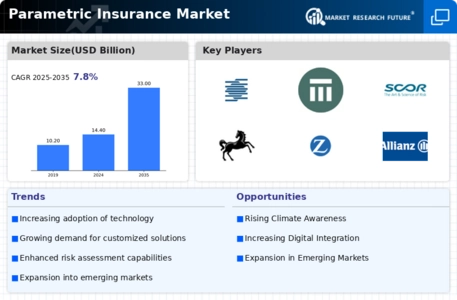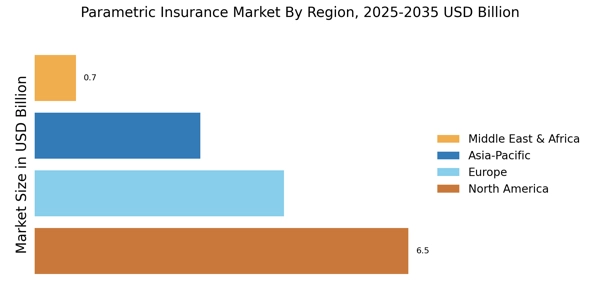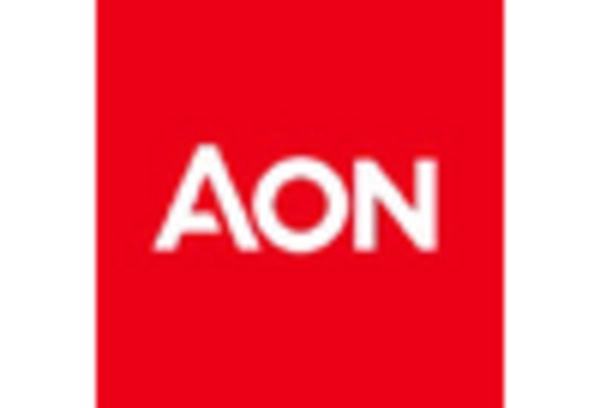Regulatory Support and Frameworks
The Parametric Insurance Market is experiencing a favorable regulatory environment that supports the growth of parametric insurance products. Governments and regulatory bodies are increasingly recognizing the importance of innovative insurance solutions in managing risks associated with natural disasters and climate change. This recognition has led to the establishment of frameworks that facilitate the development and implementation of parametric insurance products. For instance, some countries have introduced incentives for businesses that adopt parametric insurance solutions, thereby encouraging wider adoption. As regulatory support continues to strengthen, the parametric insurance market is poised for significant growth.
Increased Demand for Rapid Payouts
The Parametric Insurance Market is witnessing a surge in demand for rapid payout mechanisms. Traditional insurance often involves lengthy claims processes, which can be detrimental in times of crisis. Parametric insurance, by contrast, offers predefined payouts based on specific triggers, such as natural disasters or weather events. This immediacy is particularly appealing to businesses and individuals who require swift financial relief. According to recent data, the parametric insurance segment has seen a growth rate of approximately 15% annually, driven by the need for quick access to funds. As awareness of this product increases, more stakeholders are likely to adopt parametric solutions, further propelling the market forward.
Growing Awareness of Climate Change
The Parametric Insurance Market is increasingly influenced by the growing awareness of climate change and its associated risks. As extreme weather events become more frequent and severe, businesses and individuals are seeking innovative insurance solutions that can address these challenges. Parametric insurance provides a viable option, as it can be tailored to cover specific climate-related risks, such as floods or hurricanes. Recent studies indicate that the market for climate-related parametric insurance products is expanding, with a projected increase in demand from sectors like agriculture and real estate. This heightened awareness of climate risks is likely to drive further investment in parametric insurance solutions.
Diversification of Insurance Products
The Parametric Insurance Market is witnessing a diversification of insurance products, catering to a broader range of risks and sectors. Insurers are increasingly developing parametric solutions that address specific needs, such as agricultural risks, travel disruptions, and business interruptions. This diversification is driven by the recognition that traditional insurance models may not adequately cover emerging risks. Recent market analyses suggest that the introduction of tailored parametric products could lead to a substantial increase in market penetration, with estimates indicating a potential doubling of market size within the next five years. As insurers innovate and expand their offerings, the parametric insurance market is likely to flourish.
Technological Advancements in Data Analytics
The Parametric Insurance Market is benefiting from advancements in data analytics and technology. Enhanced data collection methods, including satellite imagery and IoT devices, allow insurers to assess risks more accurately and set precise parameters for payouts. This technological integration not only improves the efficiency of parametric insurance products but also enhances their appeal to potential clients. The use of big data analytics is expected to grow, with estimates suggesting that the market could reach a valuation of several billion dollars in the coming years. As technology continues to evolve, the parametric insurance sector is likely to see increased innovation and product development.


















Leave a Comment